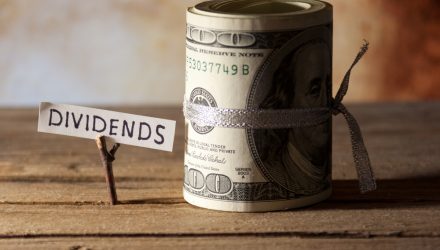Prior to this year, dividend investing was a vaunted thesis. Amid a rash of cuts and suspensions in the first six months of 2020, dividend investing is taking its lumps, but that turbulence spotlights the importance of quality strategies, such as the FlexShares Quality Dividend Defensive Index Fund (NYSEArca: QDEF).
FlexShares’ quality dividend indexing methodology targets management efficiency or quantitative evaluation of a firm’s deployment of capital and its financing decisions. By using a management efficiency screen, the index can screen out firms that aggressively pursue capital expenditures and additional financing, which typically lose flexibility in both advantageous and challenging partitions of the market cycle.
Despite some bumps in the dividend road, many of which were skirted by QDEF, the FlexShares exchange traded fund and investing for payouts remain relevant, particularly in today’s low yield environment.
“As populations are aging, the need for income is growing. Yet interest rates, and government bond yields, are at historic lows,” according to BlackRock research. “These traditional income engines are falling short of investors’ needs, a scenario likely to persist as central banks hold rates near their lower bounds to prop up economies in the wake of the coronavirus crisis. The Fed has signaled its intent to keep U.S. rates near zero through 2022.”
Why QDEF Is Meaningful
In this current low yield environment, fixed income investors are having a hard time looking for the yield they desire, which opens up opportunities for dividend-yielding assets. However, investors can’t be fixated on the yield itself, but also on the quality of the dividends and their sustainability.
QDEF’s underlying index is designed to reflect the performance of a selection of companies that, in aggregate, possess greater financial strength and stability characteristics relative to the Northern Trust 1250 Index, a float-adjusted market-capitalization weighted index of U.S. domiciled large- and mid-capitalization companies. The fund will invest at least 80% of its total assets (exclusive of collateral held from securities lending) in the securities of the underlying index
“Equity income is an attractive, and I would argue a necessary, alternative. At the end of July, a 10-year U.S. Treasury yield of 0.55% compared to an S&P 500 dividend yield near 2%. Not only are stocks yielding more, but equity income has the potential to grow over time while bonds (true to their “fixed income” label) pay fixed coupons until maturity,” according to BlackRock.
QDEF yields 2.77%.
For more on multi-asset strategies, please visit our Multi-Asset Channel.
The opinions and forecasts expressed herein are solely those of Tom Lydon, and may not actually come to pass. Information on this site should not be used or construed as an offer to sell, a solicitation of an offer to buy, or a recommendation for any product.

